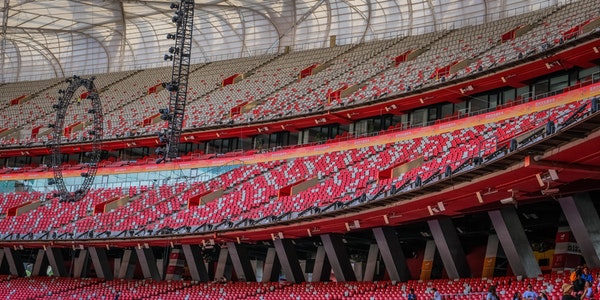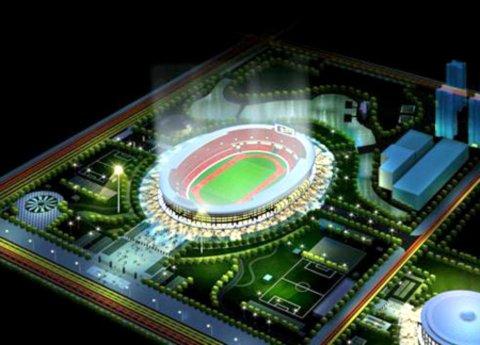Background Introduction
Since the 2008 Olympic Games, China’s sports industry has embarked on a fast track of development. In terms of competitions, China has successively hosted major competitions such as the Asian Games, the Asian Men’s Basketball Championship, and the 3X3 Asian Cup of Men’s Basketball. And successfully bid for the Winter Olympics, Men’s Basketball World Championships and other international events. It can be said that China’s sports industry has ushered in a good opportunity for development!
The Importance of Lighting for Sports
China has put forward two major concepts: building a sports power and nationwide fitness. Due to the huge population base, if the nationwide fitness is really achieved, the market in the sports field will be an astronomical number! As a subsidiary of the sports industry, the field of sports lighting is also developing rapidly. Because of sports, the requirements for venue lighting are also very strict!
Maybe track and field sports like running do not have very high requirements on the venue. However, ball sports such as basketball, football, and badminton, as well as sports such as swimming and skating, have very high requirements for the lighting of the venue. If the lighting conditions of the venue cannot meet the needs of users, it will cause a very poor sports experience and seriously affect everyone’s enthusiasm for sports.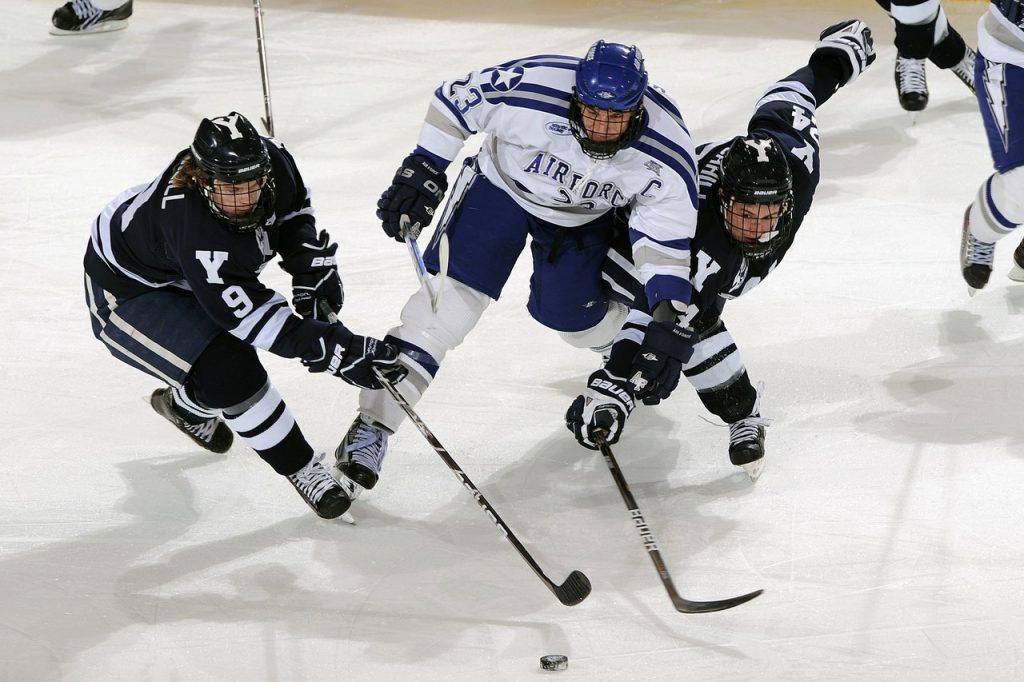
Why Professional Lighting is Needed
Professional sports need to be equipped with professional sports venues, and professional sports venues naturally need the most professional supporting facilities. For stadiums, the most important sports facilities consist of two parts, one is “in the sky” and the other is “underground.” The underground facilities of the stadiums, depending on the purpose of the venue, mainly include two forms of grass and floor. Grass is mostly used in sports such as football and tennis. The floor mainly includes basketball, table tennis and other sports. Ground facilities need to be changed according to different sports.
As for the sky, it mainly refers to sports lighting. The time of sports games is generally at night, so professional sports lighting is needed as a support. Good lighting allows athletes to perform at their best, and poor lighting not only affects the player’s state, but also affects the physical health of the players. In order to be responsible for the players’ bodies and the quality of the game, we need to choose the most professional lights to light up the stadiums.
Advantages of LED sports lighting
In sports lighting, the quality of lighting fixtures and lighting varies. In the previous sports lighting industry, metal halide lamps dominated the industry. However, due to various reasons, metal halide lamps are gradually being replaced by LED sports lights. In other words, LED sports lighting is becoming the leader in this industry! Compared with metal halide lamps, LED has obvious advantages. Both in terms of lighting effects and the quality of lamps, they are ahead of the metal halide lamps. Therefore, LED replacement of metal halide lamps is becoming an inevitable industry.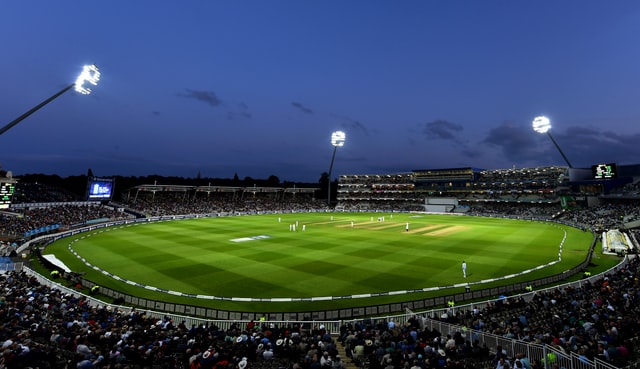
In the field of LED sports lighting, Tachyon’s lamps have made a very big breakthrough compared to ordinary LED sports lighting. If you want to make an analogy, Tachyon sports lights are equivalent to “Captain America”, and ordinary LED sports lights are equivalent to normal humans!
The outstanding advantages of Tachyon lamps are mainly reflected in the realization of personalized customization according to customer needs. The lamps are tailor-made according to the different characteristics of the stadium, anti-glare, high uniformity, non-dazzling, comfortable, without any light pollution. With the rapid development of the sports industry and sports lighting industry, we believe that in the next few years, sports lighting will usher in an explosive period.
Stadium Lighting Design
1. The importance of stadium lighting
For a modern stadium, it not only requires a beautiful and generous building appearance, complete sports equipment, but also a good lighting environment. That is to say, it is required to have suitable and uniform illuminance and brightness, ideal light color, three-dimensional effect and no glare, etc. In addition to ensuring good viewing effects for the audience, the lighting requirements for referees, athletes and competition events is also a must, as well as good television broadcast effects.
Illumination relies on the function of light to ensure that the light acts on the eyes of athletes, referees, and spectators to produce vision, so that everything on the stadium can be seen. Such as the light and shade of the venue environment, the color of the surface of the objects, buildings, appliances and clothing, the shape and size of the viewing target, the depth, the three-dimensional effect, the state of the athletes during exercise, and the atmosphere of the stadium, etc. Therefore, good lighting occupies an important position in modern stadiums.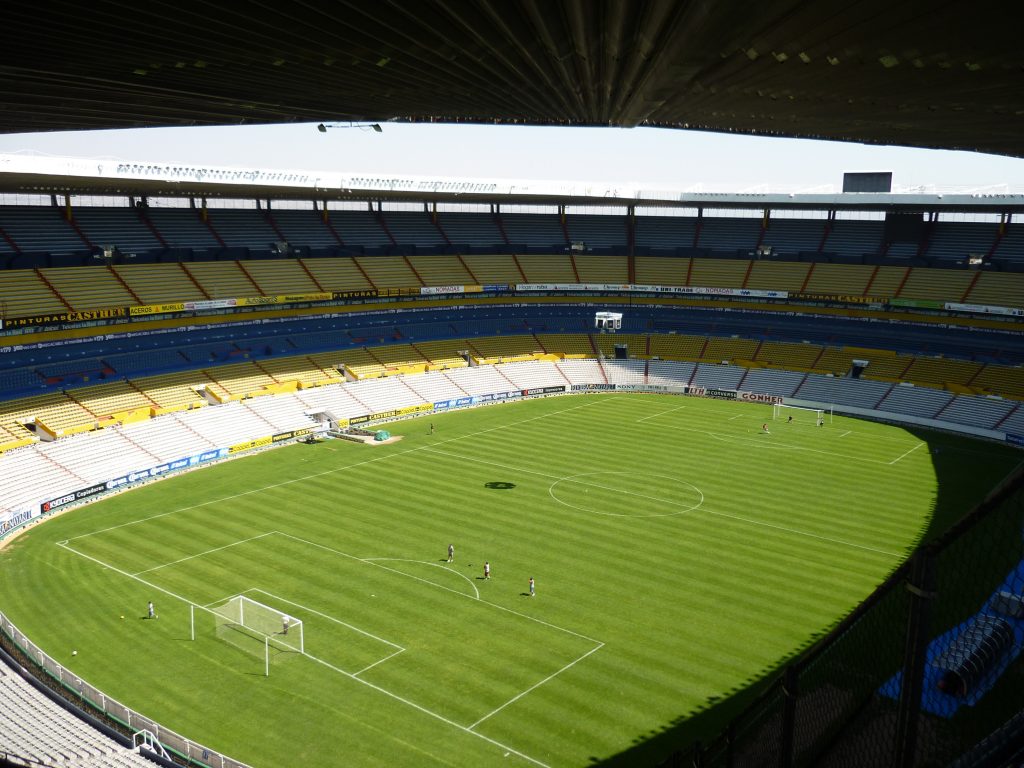
Factors to consider when designing lighting
Generally, in the lighting design of a stadium, the following three factors should be considered:
(1). Meet the visual requirements of athletes in sports competitions, and minimize the objective impact of lighting on the competition.
(2). Meet the visual requirements of the audience, and minimize the discomfort caused by the light when watching the game.
(3). Meet the lighting requirements for color TV broadcasting, and improve the broadcasting quality as much as possible.
In short, lighting is closely related to the competition requirements of sports events and closely related to the viewing effect of the audience. A stadium without good lighting facilities is an incomplete stadium, which will seriously affect its use and functions.
2. Stadium lighting design standards
In order to obtain a good lighting design plan and reasonably use the distribution of light to meet the requirements of athletes, spectators, referees and good television broadcast effects, lighting standards must be determined first. Lighting standards include illuminance standards and lighting quality standards. Lighting quality standards, including glare, light source color temperature, color rendering requirements, light directionality, energy saving requirements, etc.
2.1 Illumination standard
According to the International Sports Federation No. 83 recommended illuminance requirements and “Civil Building Lighting Design Standards” GBJ133-90 in Article 2.2.9, the following illuminance standard recommended values are proposed. A few notes:
(1) According to Article 2.2.9-1 of “Civil Building Lighting Design Standard” GBJ133-90: Standard value of illuminance for football field games: 150~200~300lx when the viewing distance is 120m. When the viewing distance is 160m, it is 200~300~500lx. When the viewing distance is 200m, it is 300~500~750lx. The viewing distance refers to the distance from the last row of the auditorium to the edge of the venue.
(2). According to Article 2.2.9-2 of “Civil Architecture Lighting Design Standard” GBJ133-90: Vertical illuminance required for TV broadcasting:
Usually we divide the maximum shooting distance into three groups.
①For football events, the average vertical illuminance should be 750lx when the shooting distance is 25m. When the maximum shooting distance is 75m, the average vertical illuminance should be 1000lx. When the maximum shooting distance is 150m, the average vertical illuminance is 1500lx.
②For track and field events, the average vertical illuminance should be 500lx when the maximum shooting distance is 25m. The maximum shooting distance is 75m and the average vertical illumination should be 750lx. When the maximum shooting distance is 150m, the average vertical illumination is 1000lx.
Each of the above-mentioned vertical illuminances is for a given motion level and the value of a given maximum shooting distance relative to the 1.0m vertical plane. And the intermediate value of each illuminance value is for other shooting distances.
(3) The above illuminance refers to the final average illuminance of the stadium. The initial illuminance selected during design is a must in the maintenance factor, and generally a value of 0.7 to 0.8 can be standard.
(4) Uniformity of horizontal illuminance: The uniformity of illuminance is generally expressed by the ratio of the minimum illuminance to the maximum illuminance. We can also express it as the ratio of the minimum illuminance to the average illuminance. The ratio of minimum illuminance to maximum illuminance should be greater than 0.5.
(5) Uniformity of vertical illuminance: The ratio of minimum illuminance to maximum illuminance should be greater than 0.4 to meet the requirements of the main TV camera.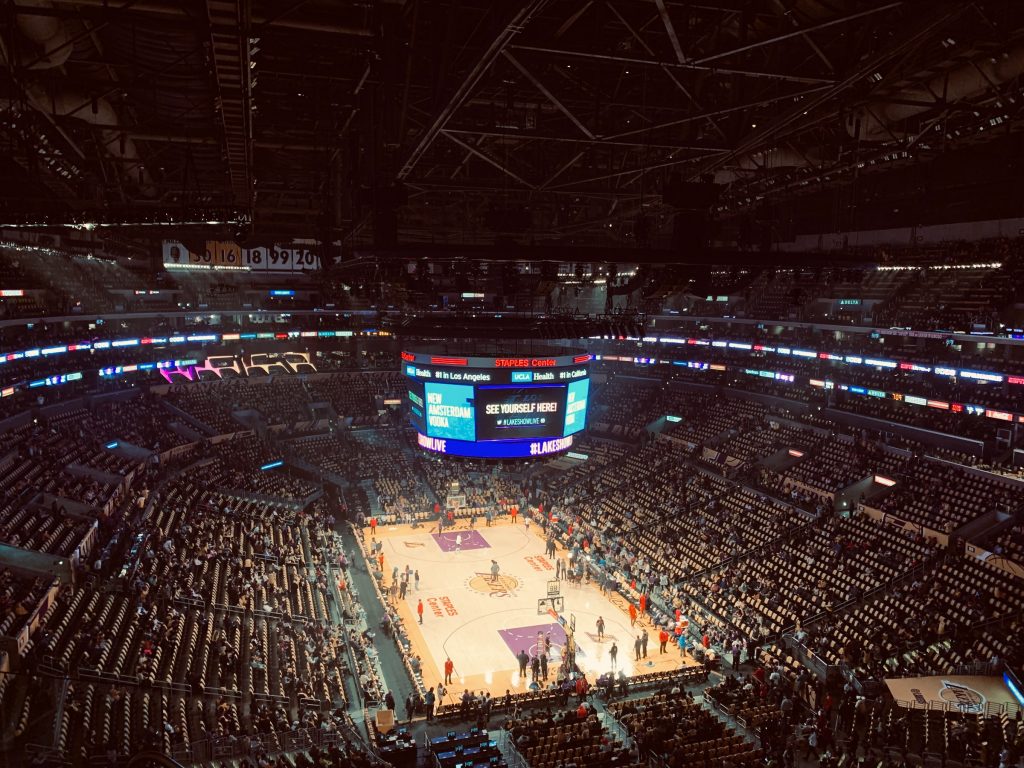
2.2 Lighting quality standards
2.2.1 glare
In addition to providing sufficient horizontal and vertical illuminance, the key to sports lighting also needs to reduce glare. So as to achieve a bright and glare-free effect. Glare is one of the most important factors affecting the quality of lighting. According to CIE NO.83 publication “Sports Stadium Lighting for Color TV System”, the maximum glare index GRmax in the stadium should be less than 50. The smaller the glare rating GR, the better the glare limit. The glare rating is 50 hours. The following formula displays the glare rating GR:
GR=27+24LgLvl/Lve 0.9
In the above formula, Lvl is the brightness of the light curtain produced by the lamp. And Lve is the brightness of the light curtain produced by the environment. Generally, when calculating the illuminance, the glare rating GR in different directions should be calculated. When GR<50, it will do. In addition to the reasonable selection of lamps, installation height and arrangement of the glare limitation. We can also adopt methods to improve the background illumination of the stadium.
2.2.2 CCT & CRI
Light source color temperature and color rendering requirements
In order to achieve a good color TV broadcast effect, the lighting quality of the stadium is not only related to the illuminance. But also closely related to the color temperature and color rendering of the lighting source. Article 3.3.2 of “Civil Building Lighting Design Standard” CIE J133-90 stipulates that the color rendering index Ra of general light sources for color TV broadcasting shall not be less than 65. According to the CIE NO.83 publication and the requirements of FIFA, the light source correlated color temperature Tc is greater than 5000K and the light source color rendering index Ra is greater than or equal to 80 to achieve the best on-site lighting effects and color TV broadcast effects.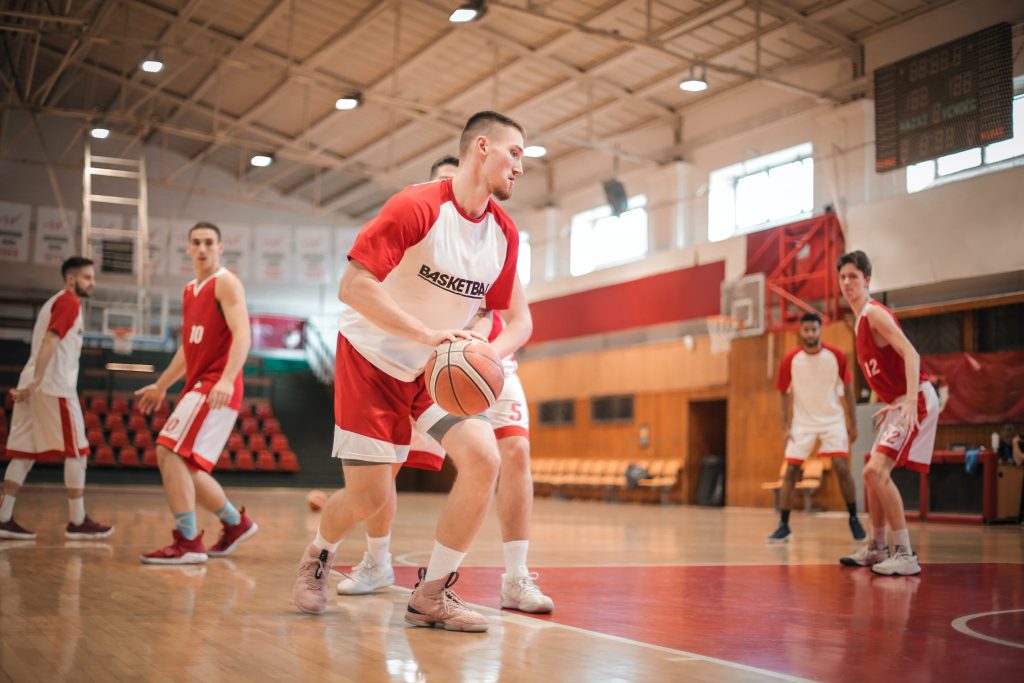
2.2.3 Directionality of light
The depression angle of the lamps not only affects the vertical illuminance. But also may have a greater glare effect on athletes, spectators and referees. For the lighting design of the ground stadium, the aiming direction of the lamps should be selected. In addition, the ratio of the main camera to the light coming from the other side should be controlled within a certain range. And the most important point of lighting is to set up in the center and restricted area of the football field.
2.2.4 Energy-saving requirements
Lighting energy saving focuses on the use of reasonable lighting schemes and efficient lighting devices. That reduces line loss and good lighting control. The sports building is a construction project that uses a large amount of electricity for lighting. From the perspective of energy saving, it is not a reasonable design to compare the initial investment cost without selecting the lighting design based on the lowest operating cost. We should consider the initial investment and operating costs comprehensively according to the specific circumstances.
High-efficiency light sources and lamps should come first, accessories such as ballasts with lower energy consumption should come together. And we should add compensation capacitors to improve the power factor of the system. The lighting design should have a variety of light-on modes and corresponding control schemes. We can adjust the number of lamps to provide suitable lighting for competitions and activities with different needs. The control scheme should be simple, practical, and flexible.
3. Calculation of stadium lighting design
There are usually three methods for calculating the illuminance of stadium lighting design. One is the method of estimating the capacity per unit area. The second is the average illuminance calculation method. We often use this to calculate the average illuminance on the illuminated surface. The third is the point-by-point calculation method, which can accurately calculate the illuminance at a certain point.
3.1 The basic formula of the capacity estimation method per unit area:
N=P×A/PL
In the above formula: N—the number of floodlights; PL—the power of each floodlight in W, P—the power per unit area W/m2, and A—the illuminated area in m2.
M=1/η×η1×U×U1×K
In the above formula: m—simplification coefficient; η—lamp efficiency, η1—light source efficiency, 1m/W; U—utilization coefficient, U1—illuminance uniformity, K—lamp maintenance coefficient, generally taken 0.7~0.8.
In order to simplify the calculation, LED lighting industry have worked out the M value of different light sources according to η=0.6, U=0.75, U1=0.7, K=0.7.

